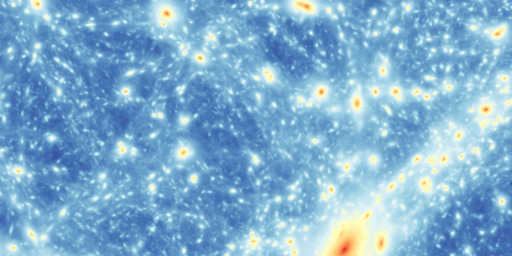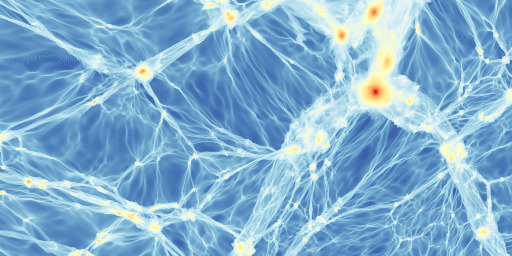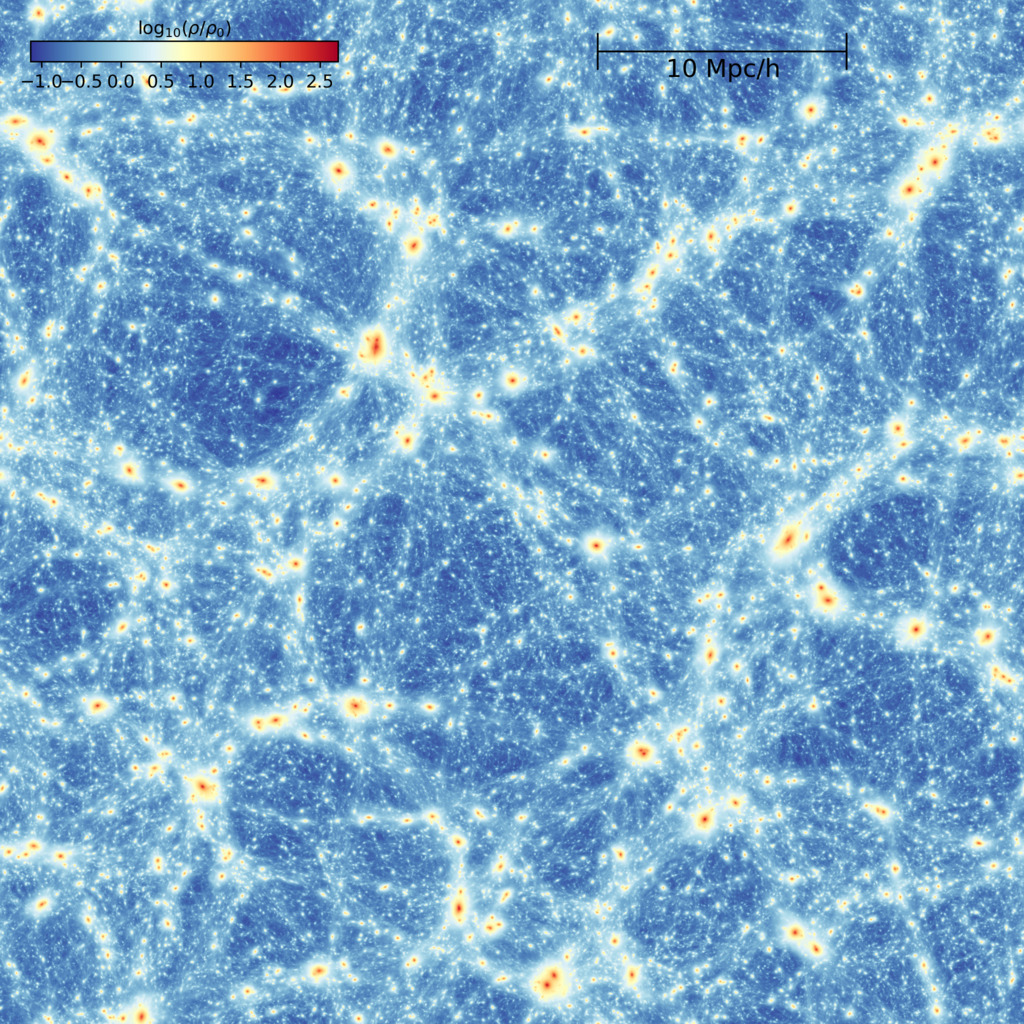

 It is common to visualize dark matter simulations in the form of relatively thick density projections. For example on the left you can see a 40 Mpc/h thick projection of the simulation. From these projections one gets the impression that haloes (diffuse round structures) are the dominant structures in our universe. This is simply, because most of the mass (~90%) resides in haloes, and each line of sight is dominated by its most massive object. Therefore density-projections give us the right impression, if the question is: What is happening to most of the mass in the universe?
It is common to visualize dark matter simulations in the form of relatively thick density projections. For example on the left you can see a 40 Mpc/h thick projection of the simulation. From these projections one gets the impression that haloes (diffuse round structures) are the dominant structures in our universe. This is simply, because most of the mass (~90%) resides in haloes, and each line of sight is dominated by its most massive object. Therefore density-projections give us the right impression, if the question is: What is happening to most of the mass in the universe?
 Now, if we ask the question "What is happening in most of the volume?", a better way of visualizing the density field is to show razor thin slices of the density field. On the right you can see such a thin slice with a thickness of 20kpc/h. The intuitive impression that you get from this is that only a small fraction of the volume is filled with haloes. A much larger part is filled by filamentary and sheet-like structures. And even the space inbetween - also known as single stream region - is far from empty.
Now, if we ask the question "What is happening in most of the volume?", a better way of visualizing the density field is to show razor thin slices of the density field. On the right you can see such a thin slice with a thickness of 20kpc/h. The intuitive impression that you get from this is that only a small fraction of the volume is filled with haloes. A much larger part is filled by filamentary and sheet-like structures. And even the space inbetween - also known as single stream region - is far from empty.
In the panel below you can choose between different thicknesses of a slice through the simulation box. 40 Mpc/h correspond to a projection of the complete simulation volume and 20 kpc/h to a single layer of a 2048^3 mesh that the density has been sampled on.

Now, a drawback of thin slices is, that one can only show a tiny fraction of the simulation box at a time. To help this out, it is possible to make a movie which scrolls through the whole simulation volume, by changing the z-coordinate over time. You can find such a "slice-movie" below. We will use this way of visualizing the volume of the simulation box more often in the following sections.
You can also find higher resolution versions of some slices here.